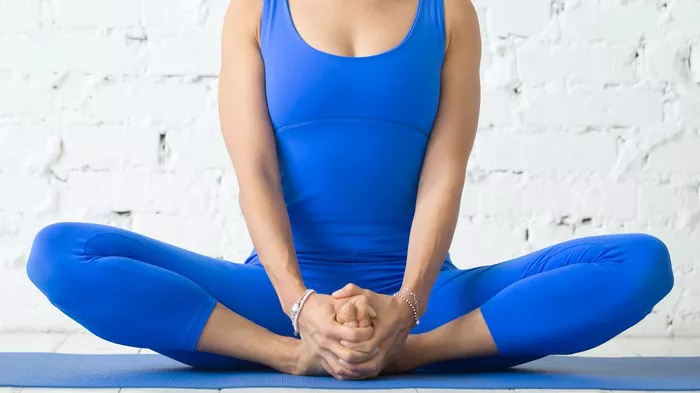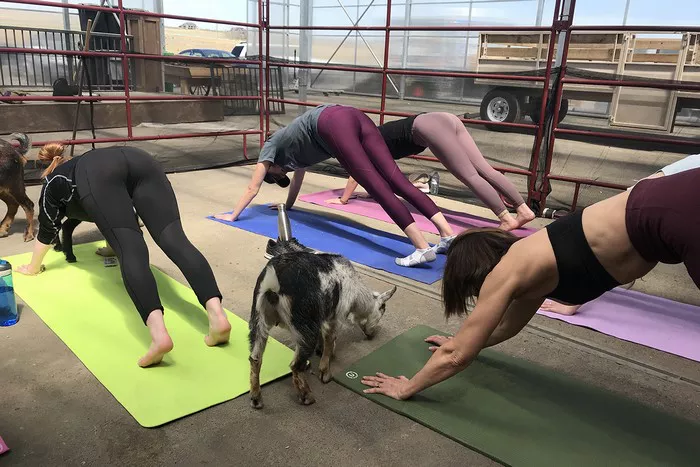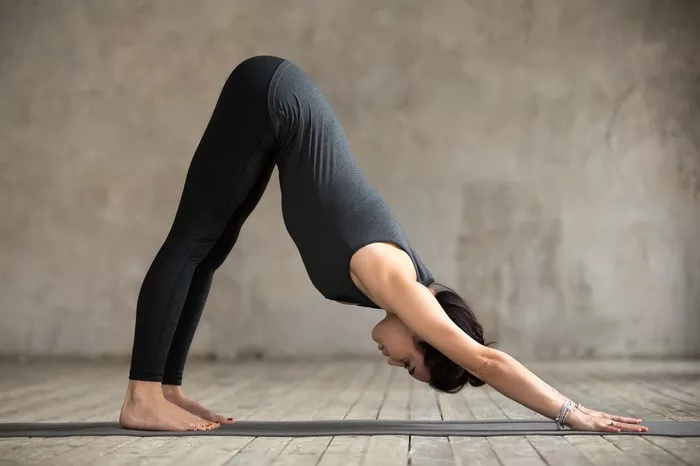Yoga, an ancient practice that has evolved over thousands of years, offers a wide range of benefits, from physical strength and flexibility to mental clarity and emotional balance. Among the multitude of yoga poses, sitting postures are particularly important as they provide the foundation for meditation, breath control (pranayama), and deeper stretches. Here, we explore the top 10 sitting yoga poses that can enhance your practice, whether you are a beginner or an experienced yogi.
1. Sukhasana (Easy Pose)
Sukhasana, or Easy Pose, is often the go-to pose for meditation and pranayama. It is accessible to most people and serves as a great starting point for those new to sitting yoga poses.
How to Perform Sukhasana:
- Sit on the floor with your legs crossed, placing each foot under the opposite knee.
- Lengthen your spine, ensuring your back is straight but not rigid.
- Place your hands on your knees, palms facing up or down.
- Close your eyes and breathe deeply.
Benefits:
- Promotes inner calm and relaxation.
- Enhances concentration and focus.
- Stretches the hips, knees, and ankles.
2. Padmasana (Lotus Pose)
Padmasana, or Lotus Pose, is a classic meditation posture in which each foot is placed on the opposite thigh. This pose is more advanced and requires flexibility in the hips and knees.
How to Perform Padmasana:
- Sit with your legs extended in front of you.
- Bend your right knee and place your right foot on your left thigh.
- Repeat with your left leg, placing your left foot on your right thigh.
- Rest your hands on your knees in a mudra of your choice.
Benefits:
- Deepens meditation and promotes mental clarity.
- Opens the hips and stretches the ankles and knees.
- Encourages proper alignment of the spine.
3. Vajrasana (Thunderbolt Pose)
Vajrasana, or Thunderbolt Pose, is a kneeling posture that is especially beneficial after meals, as it aids digestion.
How to Perform Vajrasana:
- Kneel on the floor with your knees together and feet slightly apart.
- Sit back on your heels, ensuring your big toes touch and your heels are slightly apart.
- Place your hands on your thighs, palms down.
- Keep your back straight and breathe deeply.
Benefits:
- Improves digestion and alleviates constipation.
- Strengthens the lower back and pelvic muscles.
- Enhances concentration and mental stability.
4. Baddha Konasana (Bound Angle Pose)
Baddha Konasana, or Bound Angle Pose, also known as Butterfly Pose, is excellent for opening the hips and groin area.
How to Perform Baddha Konasana:
- Sit with your legs extended in front of you.
- Bend your knees and bring the soles of your feet together.
- Pull your heels as close to your pelvis as possible.
- Hold your feet with your hands and gently press your knees towards the floor.
- Lengthen your spine and breathe deeply.
Benefits:
- Opens the hips and groin, improving flexibility.
- Stimulates the abdominal organs and improves circulation.
- Relieves stress and fatigue.
5. Ardha Matsyendrasana (Half Lord of the Fishes Pose)
Ardha Matsyendrasana, or Half Lord of the Fishes Pose, is a seated spinal twist that invigorates the spine and stimulates digestion.
How to Perform Ardha Matsyendrasana:
- Sit with your legs extended in front of you.
- Bend your right knee and place your right foot outside your left thigh.
- Bend your left knee, bringing your left foot near your right hip.
- Inhale, lengthen your spine, and twist to the right.
- Place your right hand on the floor behind you and your left elbow outside your right knee.
- Hold the pose and breathe deeply before switching sides.
Benefits:
- Improves spinal flexibility and relieves tension in the back.
- Stimulates the digestive organs and detoxifies the body.
- Enhances lung capacity and breathing efficiency.
6. Janu Sirsasana (Head-to-Knee Forward Bend)
Janu Sirsasana, or Head-to-Knee Forward Bend, is a calming forward bend that stretches the hamstrings and stimulates the liver and kidneys.
How to Perform Janu Sirsasana:
- Sit with your legs extended in front of you.
- Bend your right knee and place the sole of your right foot against your inner left thigh.
- Inhale, lengthen your spine, and then exhale as you fold forward over your left leg.
- Reach for your left foot with both hands, keeping your spine long.
- Hold the pose and breathe deeply before switching sides.
Benefits:
- Stretches the hamstrings, spine, and shoulders.
- Stimulates the liver and kidneys, aiding in detoxification.
- Calms the mind and reduces anxiety.
7. Gomukhasana (Cow Face Pose)
Gomukhasana, or Cow Face Pose, is a seated pose that provides a deep stretch for the shoulders, chest, and hips.
How to Perform Gomukhasana:
- Sit with your legs extended in front of you.
- Bend your knees and stack your right knee on top of your left.
- Bring your heels close to your hips, with your feet pointing outward.
- Inhale and extend your right arm up, bending it at the elbow to bring your right hand down your back.
- Bring your left arm behind your back, reaching up to clasp your right hand.
- Hold the pose and breathe deeply before switching sides.
Benefits:
- Stretches the shoulders, chest, and hips.
- Improves posture and alleviates shoulder tension.
- Enhances lung capacity and respiratory function.
8. Upavistha Konasana (Wide-Angle Seated Forward Bend)
Upavistha Konasana, or Wide-Angle Seated Forward Bend, is an expansive forward bend that deeply stretches the inner thighs and hamstrings.
How to Perform Upavistha Konasana:
- Sit with your legs extended wide apart.
- Inhale, lengthen your spine, and then exhale as you fold forward from your hips.
- Walk your hands forward and extend your torso towards the floor.
- Keep your legs engaged and your spine long.
- Hold the pose and breathe deeply.
Benefits:
- Stretches the inner thighs, hamstrings, and spine.
- Improves flexibility in the hips and legs.
- Calms the mind and relieves stress.
9. Paschimottanasana (Seated Forward Bend)
Paschimottanasana, or Seated Forward Bend, is a fundamental yoga pose that stretches the entire back of the body and promotes relaxation.
How to Perform Paschimottanasana:
- Sit with your legs extended straight in front of you.
- Inhale, lengthen your spine, and then exhale as you fold forward from your hips.
- Reach for your feet or shins, keeping your spine long.
- Hold the pose and breathe deeply.
Benefits:
- Stretches the spine, hamstrings, and calves.
- Stimulates the liver, kidneys, and digestive organs.
- Calms the mind and reduces fatigue.
10. Siddhasana (Adept’s Pose)
Siddhasana, or Adept’s Pose, is another classic meditation posture that aligns the body and mind for deep concentration.
How to Perform Siddhasana:
- Sit with your legs extended in front of you.
- Bend your left knee and place your left heel against your perineum.
- Bend your right knee and stack your right ankle over your left, aligning your heels.
- Place your hands on your knees, palms facing up or down.
- Lengthen your spine and breathe deeply.
Benefits:
- Balances energy in the body and mind.
- Enhances concentration and focus.
- Opens the hips and stretches the knees and ankles.
Conclusion
Incorporating these top 10 sitting yoga poses into your practice can bring numerous physical, mental, and emotional benefits. Each pose offers unique advantages, from improving flexibility and digestion to enhancing meditation and reducing stress. Whether you are just beginning your yoga journey or looking to deepen your existing practice, these sitting postures provide a strong foundation for holistic well-being. Remember to practice with awareness and mindfulness, honoring your body’s limits and enjoying the journey towards inner peace and balance.























